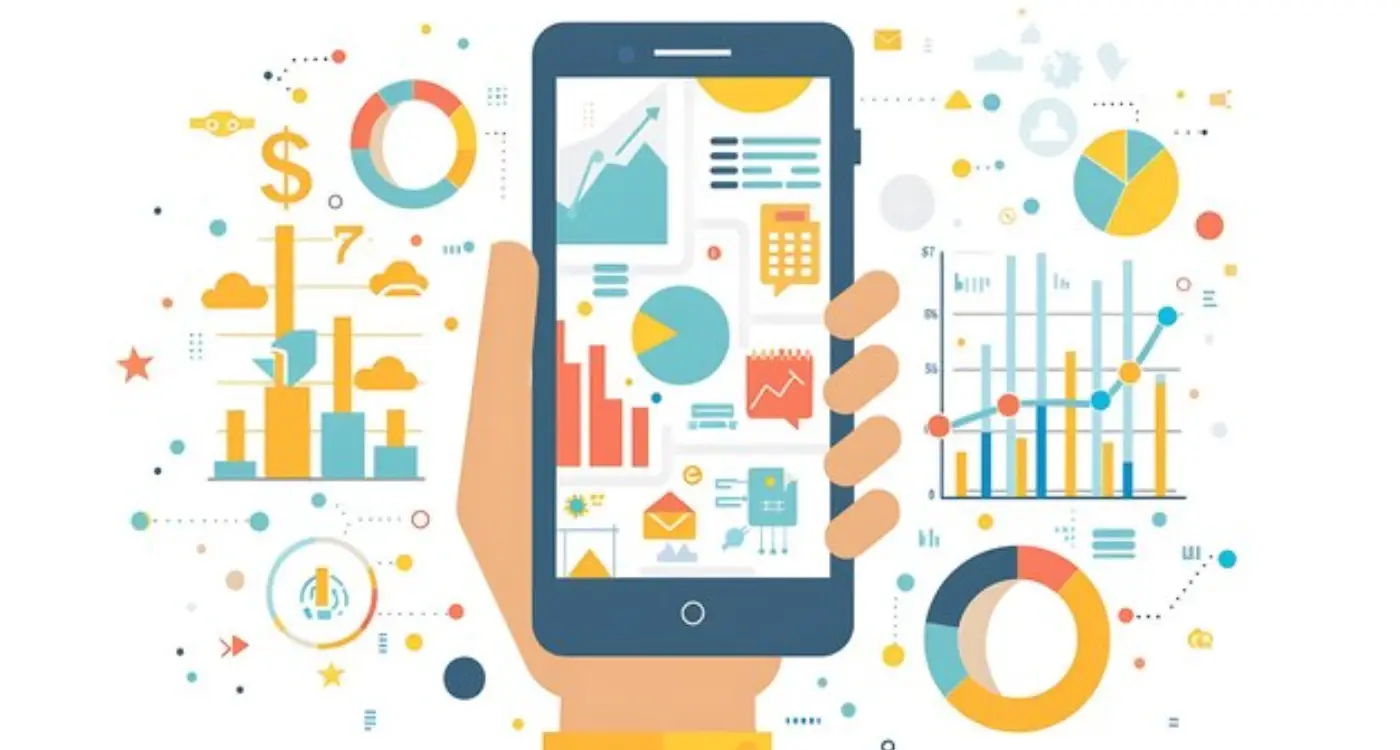Why Do App Feasibility Studies Matter for New Businesses?
You have this brilliant app idea that could change everything for your business. The excitement builds as you imagine users downloading it, loving it, and telling their friends about it. But then reality hits—you start thinking about costs, timelines, and whether people actually want what you're planning to build. That nagging voice in your head asks: what if this whole thing is a massive mistake?
I've been working with startups and established companies for years now, and I can't tell you how many times I've seen businesses jump headfirst into app development without doing their homework first. They come to me six months later, budget blown, wondering where it all went wrong. The thing is, most app failures aren't because of bad coding or poor design—they happen because nobody checked if the idea made sense in the first place.
An app feasibility study is basically your safety net. It's the process of examining whether your app idea is actually worth pursuing before you spend thousands of pounds building it. We're talking about understanding your market, checking out the competition, working out realistic costs, and figuring out if you've got the resources to pull it off successfully.
The most expensive app you'll ever build is the one that nobody uses
Look, I get it—feasibility studies might seem like just another hurdle when you're eager to start building. But here's what I've learned: spending a few weeks properly planning your app can save you months of headaches and a small fortune. Plus, it actually makes the development process smoother because everyone knows exactly what they're building and why. That's not just good business sense; it's the difference between apps that succeed and apps that get forgotten in the app store graveyard.
What Is an App Feasibility Study
Right, let's talk about what an app feasibility study actually is—and why it's not just another bit of corporate jargon that gets thrown around. When I first started building apps, I'll be honest, I used to skip this step. Seemed like a waste of time when I could be coding instead. But after watching several projects crash and burn (and cost my clients a fair bit of money), I learned that a proper feasibility study is actually your best friend.
An app feasibility study is basically a deep dive into whether your app idea makes sense from every angle that matters. We're talking market viability, technical requirements, financial projections, and timeline estimates all rolled into one comprehensive document. Think of it as your reality check before you start spending serious money on development.
Key Components of a Feasibility Study
A proper feasibility study covers several key areas that I've learned are make-or-break factors for app success:
- Market analysis—who are your users and do they actually want this?
- Technical assessment—can we actually build what you're imagining?
- Financial projections—what will this cost and how will it make money?
- Competition review—who else is doing this and how are they performing?
- Risk evaluation—what could go wrong and how do we prepare for it?
- Timeline planning—realistic development schedules and milestones
The study isn't meant to kill your dreams—it's designed to save you from expensive mistakes and help you make informed decisions about your app investment. I've seen too many brilliant ideas fail simply because the groundwork wasn't done properly. A good feasibility study gives you the confidence to move forward or the wisdom to pivot before you've spent your entire budget.
Market Research and Competition Analysis
Right, let's talk about something that makes or breaks apps before they even launch—understanding your market and who you're up against. I've seen too many brilliant app ideas fail because the developers didn't do their homework first. It's genuinely painful to watch, especially when a bit of research could have saved months of work and thousands of pounds.
Market research for mobile apps isn't just about checking if similar apps exist (spoiler alert: they probably do). It's about understanding who your users actually are, what problems they face daily, and how much they're willing to pay for a solution. You need to dig into their behaviour patterns, which devices they use, and where they typically discover new apps. I always tell my clients to spend time in Facebook groups, Reddit communities, and Twitter threads where their target audience hangs out—that's where you'll find the real pain points people are discussing.
Understanding Your Competition
Competition analysis goes way deeper than downloading your competitors' apps and having a quick play around. You need to study their app store reviews, look at their update frequency, check their pricing models, and understand their marketing approach. What features do users love? What complaints keep appearing? Where are the gaps you could fill?
Don't just focus on direct competitors either. Sometimes your biggest threat comes from an unexpected angle—a social media platform adding new features, or a completely different type of app solving the same underlying problem.
Use tools like App Annie or Sensor Tower to track your competitors' download numbers, revenue estimates, and user ratings over time. This data helps you spot trends and opportunities you might otherwise miss.
The key is finding that sweet spot where there's genuine demand but the current solutions aren't quite hitting the mark. That's where successful apps live.
Right, let's talk about the technical side of things—because this is where a lot of people get unstuck. I've seen brilliant app ideas crash and burn simply because nobody thought through the technical requirements properly. It's not just about choosing between iOS and Android anymore; there's a whole web of decisions that need making.
First up, platform selection. Sure, you could go native for both iOS and Android, but that means building two separate apps. More time, more money, more complexity. Cross-platform frameworks like React Native or Flutter can cut your development time in half—I've used both extensively and they work well for most projects. But here's the thing: if you're planning something really performance-heavy (think gaming or complex animations), native might be your only option.
Backend Infrastructure Decisions
Then there's your backend infrastructure. Cloud services like AWS or Google Cloud are brilliant for scaling, but they can get expensive quickly if you don't plan properly. I always recommend starting with something manageable and planning for growth rather than overengineering from day one. You know what kills more apps than bad design? Servers that can't handle user load when they actually take off.
Integration Requirements
Don't forget about third-party integrations either. Payment processing, social media logins, push notifications—each one adds complexity and potential failure points. I always map out every single integration during feasibility because discovering you need a £500/month API subscription after you've started building? That's not fun for anyone. The key is being realistic about what you actually need versus what would be nice to have. Start simple, build solid, then expand.
Budget Planning and Cost Estimation
Right, let's talk money—because honestly, this is where most app projects either fly or crash spectacularly. I've seen too many brilliant ideas die because someone underestimated costs by 200% or more. It's not pretty, and it's completely avoidable with proper planning.
The biggest mistake new businesses make? Thinking an app will cost £5,000 when they need something closer to £50,000. Sure, you can build basic apps cheaply, but if you're serious about competing in today's market, you need to budget properly. A decent business app typically starts around £15,000-30,000 for something simple; complex apps with custom features, integrations, and proper design can easily hit £100,000+.
The most expensive app is the one that fails because you didn't invest enough to make it competitive
Here's what actually costs money: proper design (not just making it look pretty—making it work intuitively), backend development, API integrations, testing across different devices, App Store optimisation, and ongoing maintenance. Don't forget the hidden costs either—things like third-party services, hosting, analytics tools, and marketing.
Breaking Down Your Budget
I always tell clients to split their budget into three chunks: 40% for development, 30% for design and user experience, and 30% for everything else (project management, testing, deployment, initial marketing). This isn't set in stone, but it gives you a realistic starting point.
And here's the thing—whatever number you land on, add 20% contingency. Trust me on this one. Every single project I've worked on has had unexpected costs. Maybe iOS releases an update that breaks something, or you discover a feature that seemed simple is actually quite complex. Budget for the unexpected because it will happen.
Timeline Development and Resource Allocation
Right, so you've got your budget sorted and know what you're building—now comes the bit that separates the successful projects from the ones that drag on forever. Timeline development isn't just about picking dates out of thin air; it's about understanding how app development actually works and being realistic about what can be achieved when.
I'll be honest with you—most people get this wrong. They think building an app is like ordering a pizza: place your order, wait 30 minutes, job done. But app development is more like renovating a house whilst you're still living in it. Things take longer than expected, you discover problems you didn't know existed, and sometimes you need to change direction entirely.
Breaking Down Your Development Phases
The key is breaking everything into manageable chunks. Here's how I typically structure app development timelines:
- Discovery and planning (2-3 weeks)
- UI/UX design and prototyping (3-4 weeks)
- Backend development (4-6 weeks)
- Frontend development (4-8 weeks)
- Testing and quality assurance (2-3 weeks)
- App store submission and approval (1-2 weeks)
But here's the thing—these phases often overlap. Your designers might still be tweaking screens whilst developers are building the login system. That's normal. What's not normal is expecting everything to happen at once with one person doing it all.
Resource Allocation Reality Check
You'll need different people at different times. A project manager throughout, designers heavily involved in the first half, developers ramping up in the middle phases, and testers coming in towards the end. Don't forget about your own time either—you'll need to review designs, test features, and make decisions. Factor in at least 20% buffer time because something will go wrong. It always does.
User Experience and Design Considerations
When you're doing app feasibility studies for new businesses, the user experience bit is where things get really interesting. I mean, you can have the most brilliant idea in the world, but if people can't figure out how to use your app, you're basically stuffed from day one. The design considerations phase of your feasibility study needs to dig deep into who your users actually are and what they expect when they tap that download button.
Here's the thing—most new businesses think about features first and users second. That's completely backwards. During your feasibility study, you need to map out user journeys before you even think about what buttons go where. I always tell clients to start with the most basic question: what's the one thing your user absolutely must be able to do in your app? Everything else is secondary to that core function.
Create user personas during your feasibility study, not after. Include their age, tech comfort level, and the specific problem your app solves for them. This will guide every design decision you make.
The design validation part of your feasibility study should include wireframing key screens and testing them with real people. You don't need fancy prototypes at this stage—sketches on paper work fine. What you're looking for is whether people understand your app's flow without you explaining it to them.
Key Design Elements to Validate
- Navigation structure and menu placement
- Onboarding process and first-time user experience
- Core feature accessibility and discoverability
- Visual hierarchy and information architecture
- Mobile-specific interactions like swipe gestures
Remember, design isn't just about making things look pretty. It's about making your app work for real people with real problems. Your feasibility study should prove that your design approach actually solves those problems in a way that feels natural on a mobile device.
Risk Assessment and Mitigation Strategies
Right, let's talk about the stuff that keeps app developers up at night—the risks that can derail your entire project. I've seen brilliant app ideas crash and burn because teams didn't properly assess what could go wrong. And trust me, things will go wrong.
The biggest risk? Technical complexity spiralling out of control. You start with what seems like a simple feature, then realise it needs integration with three different APIs, custom backend architecture, and somehow needs to work offline too. Before you know it, your three-month timeline becomes eight months and your budget doubles.
Common App Development Risks
- Platform compatibility issues between iOS and Android
- Third-party service dependencies failing or changing their terms
- Data privacy regulations shifting mid-development
- Key team members leaving during critical phases
- Market conditions changing before launch
- App store approval delays or rejections
- Performance issues under real-world usage
Here's what I do with every client—we create a risk register early on. Sounds fancy, but it's basically a list of everything that could go wrong, how likely it is to happen, and what we'll do if it does. For each risk, we assign someone to monitor it and set up early warning signs.
Smart Mitigation Strategies
Build in buffer time. I know, I know—clients hate hearing this. But adding 20-30% extra time to your timeline isn't pessimistic; it's realistic. The same goes for budget. Have backup plans for your core features and always test on real devices, not just simulators.
Most importantly, start with your riskiest assumptions first. If your app depends on a complex AI feature working perfectly, build that proof of concept before you design a single screen. Better to fail fast and pivot than discover fundamental problems weeks before launch.
Measuring Success and Key Performance Indicators
Right, so you've done all the planning and you're ready to build your app—but how will you actually know if its working? This is where most new businesses get it completely wrong. They launch their app, watch the download numbers for a week, and think thats enough data to judge success. Its not.
When I'm working with clients on app feasibility studies, I always stress that defining success metrics upfront is just as important as understanding your target market. You need to know what good looks like before you start building, not after you launch. The key performance indicators you choose will depend entirely on what type of app you're creating and what your business goals are.
Core Metrics That Actually Matter
Downloads are vanity metrics—they make you feel good but dont tell you much about real success. What you really need to track is user retention. Are people still using your app after one day? After a week? After a month? If your day-one retention is below 25%, you've got serious problems with either your onboarding or your core value proposition.
The most successful apps focus on creating genuine value that keeps users coming back, rather than chasing download numbers that look impressive in board meetings but dont translate to sustainable business growth.
Session length and frequency tell you whether people find your app genuinely useful or if they're just opening it by accident. For most apps, you want to see users returning at least 3-4 times per week with meaningful session durations. And here's something that catches a lot of new businesses off guard—user acquisition cost versus lifetime value. If it costs you £5 to acquire a user but they only generate £3 in value over their entire relationship with your app, you're in trouble. These ratios need to be part of your feasibility study from day one, not something you figure out after burning through your marketing budget.
Look, after building apps for nearly a decade, I can tell you that feasibility studies aren't just paperwork—they're your safety net. I've watched too many brilliant entrepreneurs skip this step and end up burning through their savings on apps that never had a chance. It's heartbreaking really, because most of these failures could have been avoided.
The thing is, an app feasibility study forces you to ask the hard questions before you're emotionally invested. Will people actually pay for this? Can you build it with your budget? How will you compete with the big players? These aren't fun conversations, but they're necessary ones. I'd rather crush your dreams on paper than watch you lose your house on a doomed project.
But here's what really matters—when done properly, feasibility studies don't kill good ideas; they make them stronger. They help you spot the weak points in your plan before they become expensive problems. Maybe you'll discover your target market is too small, so you pivot to a bigger opportunity. Or perhaps the technical challenges are more complex than expected, so you adjust your timeline and budget accordingly.
Every successful app I've helped build started with someone who took the time to properly validate their idea. They understood their market, knew their competition, and had realistic expectations about costs and timelines. Sure, it meant delaying development by a few weeks, but it also meant their apps actually succeeded when they launched.
Don't skip the feasibility study. Your future self—and your bank account—will thank you for it.
Share this
Subscribe To Our Learning Centre
You May Also Like
These Related Guides

What Makes a Mobile App Feasibility Study Successful?

What Data Sources Strengthen App Feasibility Research?



